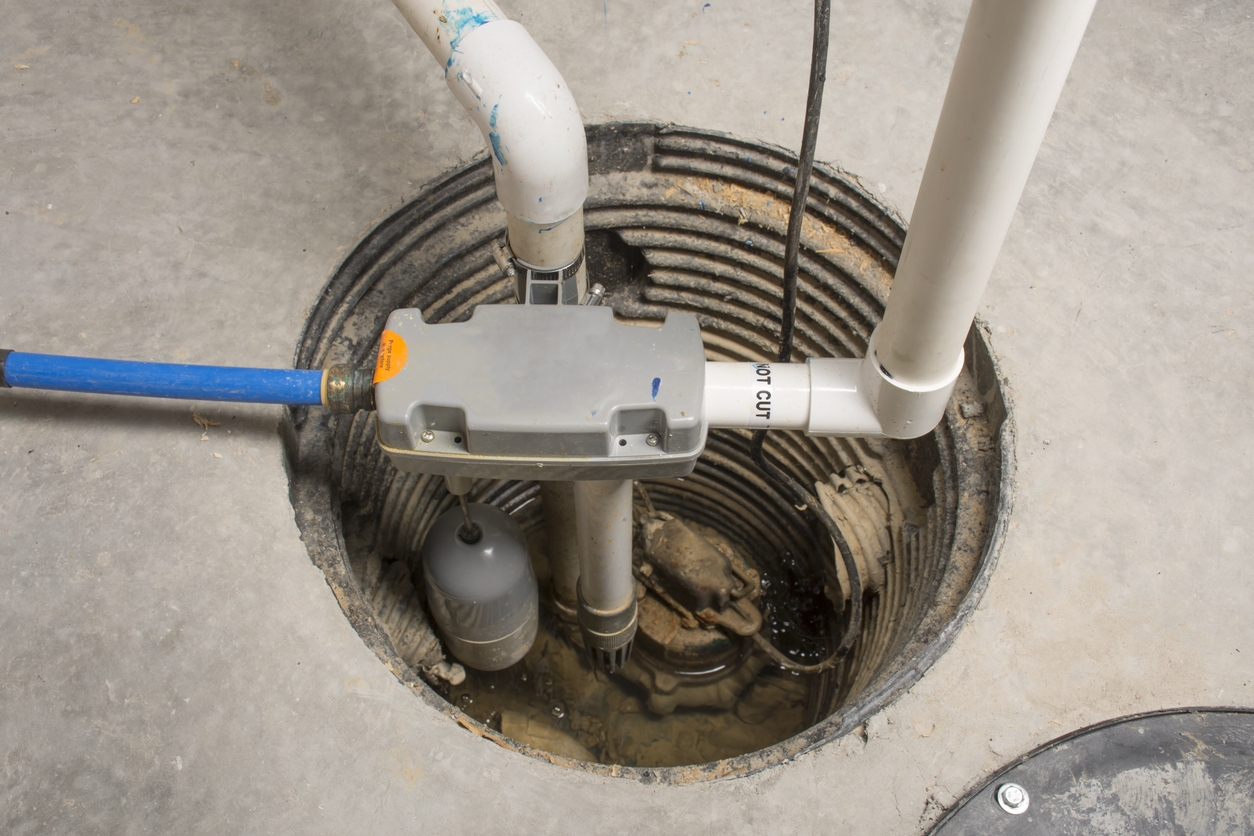Sump pumps, like everything else, have a fixed life. Typically, the lifespan of a sump pump ranges from 5 to 10 years, but once it reaches the end of its life, replacement is necessary. Sump pumps that are used more than others tend to fail closer to 4 years, whereas sump pumps used less frequently can last longer. To avoid unexpected water damage, it's essential to recognize the signs of sump pump failure and be prepared to take action before the end of its expected lifespan. The plumbing experts at Heaney Plumbing & Heating suggest that homeowners consider replacing their sump pump when one or more of these signs are present:
1. Pooling Water in the Basement
Water in your basement is a sure sign that the sump pump has failed. During heavy rainfall or storms, some water may overflow the sump pump pit. However, any excess water should go back down into your pit quickly. If water remains in your basement, you likely have a problem on your hands.
2. Water is above the Float in the Tank
When you look into the holding tank, you will see a float valve. When the water reaches the float valve, the sump pump should kick on. Water above the float valve indicates sump pump failure. Check to ensure everything is connected, possibly turning the system off and on again, to see if there is a quick fix for the extra water. If water remains about the float, call a plumber.
3. Switch Failure in Your Sump Pump
Sometimes, the electrical switch fails, preventing the signal from being transmitted, and the pump will not operate. These issues can be addressed, but for a small additional cost, a new sump pump can be installed.
4. Unusual Noises Coming from Your Sump Pump
Over time, dirt and debris can get clogged in the propeller. This can result in the pump making unusual noises that may signal a potential failure.
Preparing for Replacement
Before you begin replacing your old sump pump, taking the right steps to prepare can make the process smoother and help protect your basement from water damage. Start by turning off the power to your sump pump at the circuit breaker—this is essential for your safety and prevents the pump from activating unexpectedly while you work.
Next, locate the discharge pipe connected to your old sump pump. Determine if the existing discharge line or old PVC pipe can be reused with your new sump pump. If it’s in good condition and compatible, you can save time by keeping it in place. If not, measure and cut a new PVC pipe to the correct length, ensuring a secure connection for efficient water removal.
When choosing a new sump pump, consider the horsepower needed for your home. For most basements, a 1/3-horsepower pump is sufficient, but if your area is prone to flooding or your sump pit fills quickly, a 1/2-horsepower model may be a better fit. Selecting the right horsepower ensures your new pump can keep up when the water level rises, helping to prevent flooding and water damage.
Prepare the sump pit by removing any debris or obstructions that could block the pump or float. If your sump pump sits on a pump stand, check that it’s level and stable. Use spacers or shims if needed to keep the pump centered and allow the float to move freely—this helps the pump activate at the right water level and reduces the risk of noise or clogs.
Before installing your new sump pump, review the user manual for any specific instructions about connecting the discharge line, plugging in the pump, and testing its operation. Double-check that your ground fault circuit interrupter (GFCI) outlet is working properly to protect against electrical hazards. This extra step adds an important layer of security for your home and family.
By preparing carefully and following each step, you’ll help ensure your new sump pump is installed correctly and ready to protect your foundation from water damage. If you run into any issues—such as being blocked from accessing online resources or receiving an “Access Denied” message—refer to the reference code or URL provided for troubleshooting. Taking the time to prepare in a timely manner will help your new sump pump run smoothly and keep your basement dry for years to come.
Sump Pump Maintenance
Not all homeowners have sump pumps in their homes, but those who do must ensure that the pump is fully functional to prevent water damage in the basement. Sometimes, sump pumps require minor services from professionals and continue to run without incident, but when replacement is necessary, you will need to remove and disconnect the old sump pump before installing a new one. Depending on the age and condition of the pump, different maintenance actions may be required to keep the system operating efficiently. However, when a sump pump is showing signs of age, it is best to take prompt action and replace it.
Getting Help with Your Sump Pump from Metro Detroit's Veteran Plumbers
Those residing in Metro Detroit with aging sump pumps should contact the experts at Heaney Plumbing & Cooling. With over 45 years of providing exceptional plumbing and heating services to homeowners in Metro Detroit, Heaney is the clear choice when selecting a company to replace your aging sump pump. Contact the friendly staff today to schedule an appointment!

